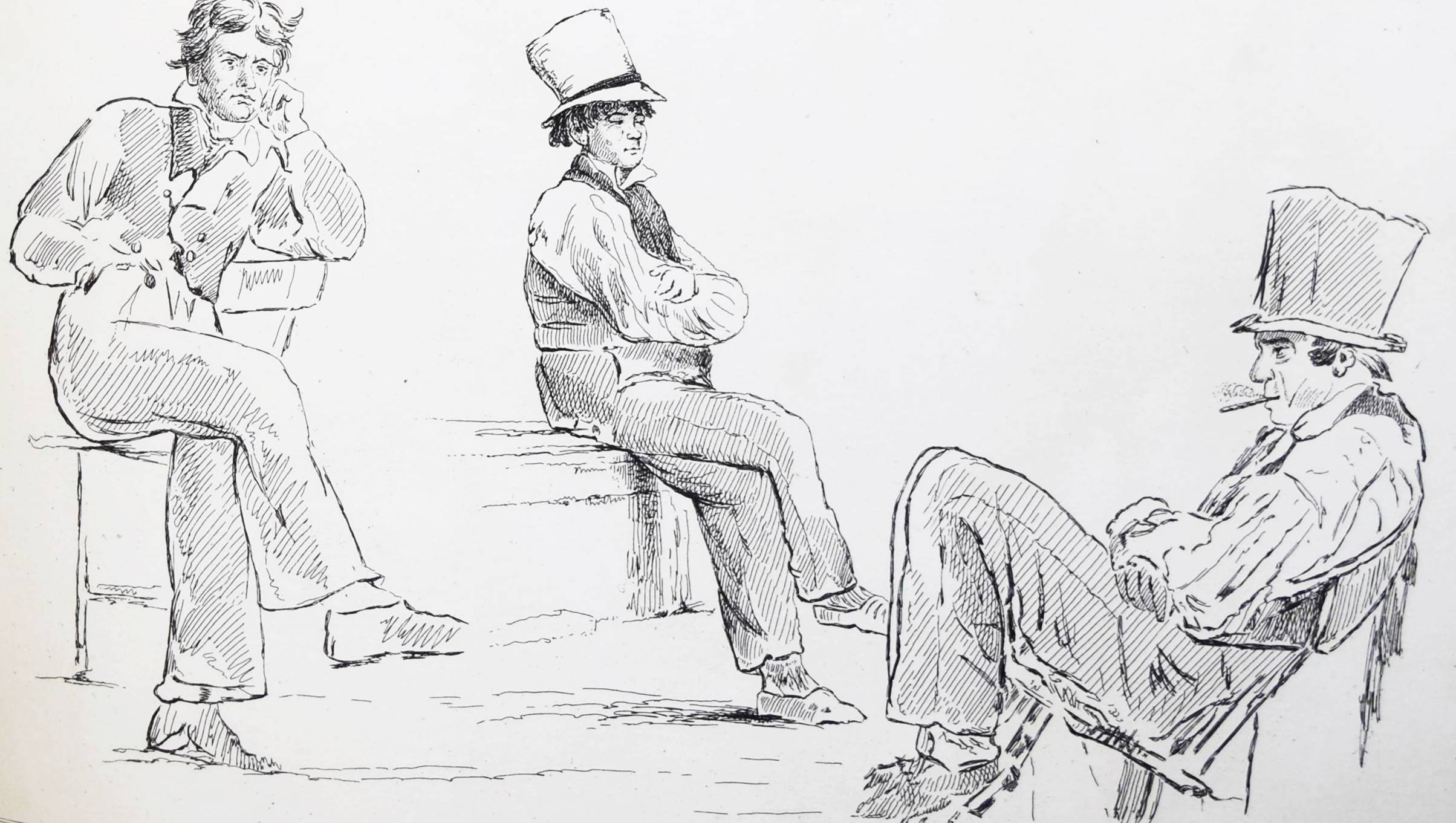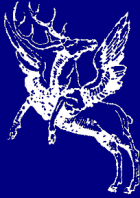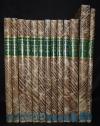Hall, Forty etchings, from sketches made with the camera lucida
Hall, Forty etchings, from sketches made with the camera lucida
|
Hall, Basil. Forty etchings, from sketches made with the camera lucida, in North America, in 1827 and 1828. Edinburgh, Cadell & Co., London, Simpkin & Marshall and Moon, Boys & Graves 1829. 4°. Titel, II, [21] Bl., 40 Radierungen auf 20 Tafeln u. 1 gefalt. grenzkol. gestoch. Karte. Typogr. OPbd. Lande 1820. Newhall, Die Väter der Photographie S. 21. Sabin 29721. – Seltene erste Ausgabe des Tafelbands zu Hall’s „Travels in North America in the Years 1827 and 1828“. – Die schönen Radierungen zeigen u. a. die Niagara-Fälle, Indianer, Sklaven und den Mississippi. Sie wurden hier erstmals mit Hilfe eines optischen Prismenglases hergestellt. Hall weist in seinem Vorwort auf die hohe Wirklichkeitstreue der Darstellungen, wie später bei der Fotografie, hin: „No reduction, enlargement, or embellishment, has been allowed for any instance; but the very lines traced on the spot, have been transferred to the plates, in order to preserve, as far as possible, the character of truth which the mechanical accuracy of the Camera Lucida communicates to ist work“. – Die Camera lucida ist eine neuartige kleine Zeichenhilfe. „Talbot beschreibt in „The Pencil of Nature“, dass er eine Camera lucida benutzte, aber wenig zeichnerisches Talent besass, um befriedigende Resultate zu erzielen. Er suchte deshalb nach einer einfacheren Lösung und erfand so die Photographie auf Papier!“ (H. R. Gabathuler). – „Die Camera lucida von William Hyde Wollaston (1766-1828), die 1807 eingeführt wurde, ist keine Kamera. Die falsche Annahme, es handele sich um eine solche, mag darauf zurückgehen, daß Fox Talbot 1823 mit ihrer Hilfe Zeichnungen anfertigte. In Wirklichkeit ist es ein kleines optisches Instrument zum Zeichnen bei hellem Tageslicht. Mit Hilfe eines Prismenglases sieht der Künstler auf seinem Papier ein virtuelles Bild, das die Abzeichnung des Gegenstandes oder der Ansicht erleichterte; das Bild war jedoch nur für den Benutzer des Instruments sichtbar“ (H. Gernsheim). – Rücken fachgerecht erneuert, Deckel angestaubt und etwas fleckig, Tafelränder teils etwas braunfleckig, sehr gutes Exemplar.
Unser Preis: EUR 1.200,-- |

|







